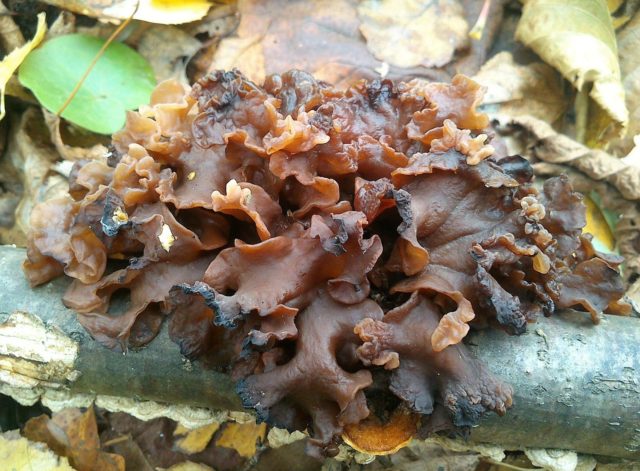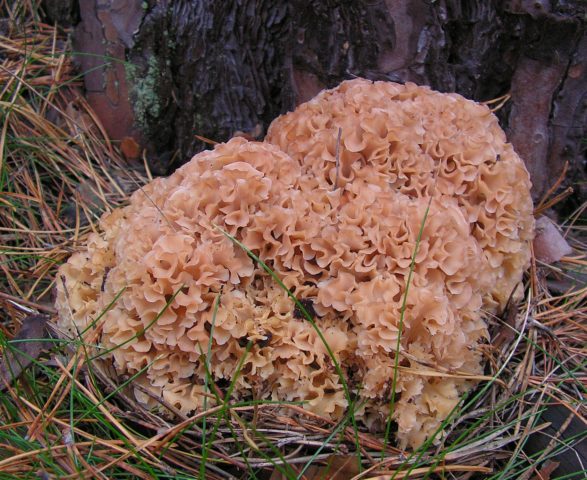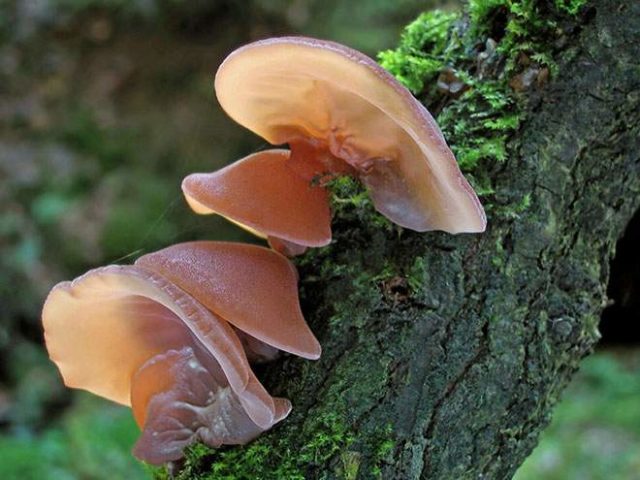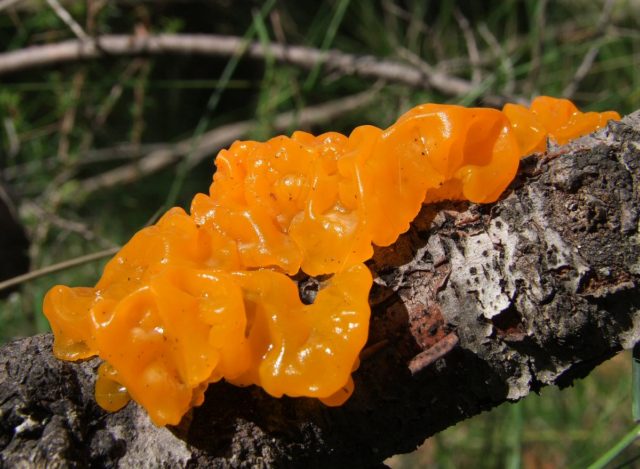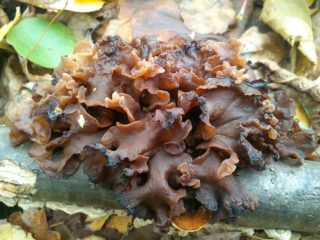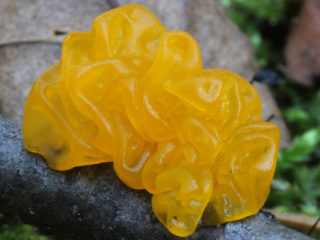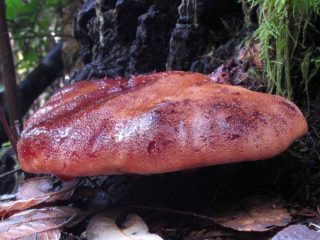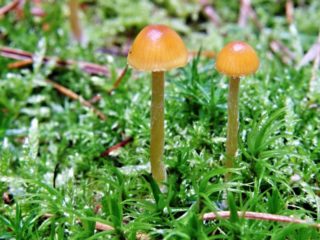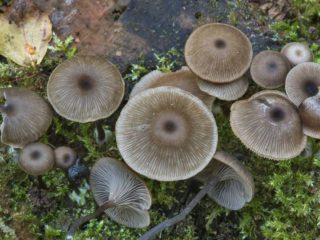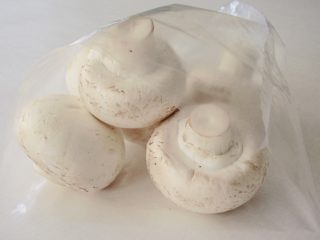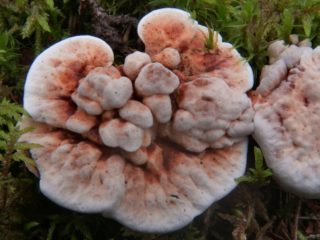Content
Leafy tremella, you can find another name - fringed (Tremella foliacea, Exidia foliacea), an inedible mushroom of the Tremella family. Stands out by appearance and color. It has twins, similar in structure.
Description of leaf shaker
Leafy tremors (pictured) is a brown or yellow-brown colored mushroom. The consistency is gelatinous, the fruit body is curved in the form of blades, often curly.
The spores are spherical or ovoid, colorless.
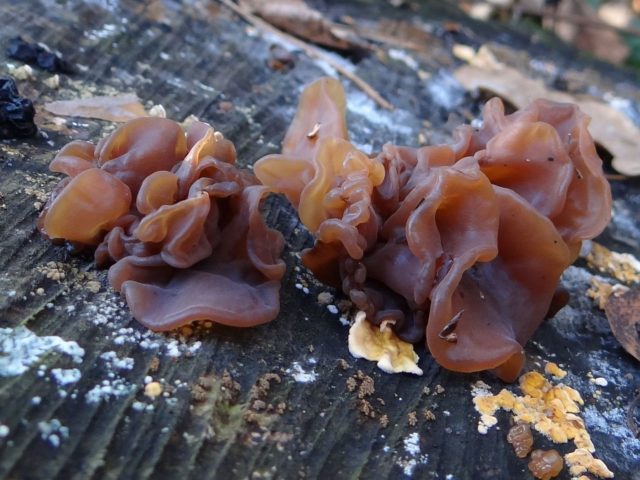
The color of tremors is usually brown or amber brown
It can take on different shapes, reaching a diameter of 15 cm. The structural features largely depend on the growth conditions.
Where and how does it grow
The leafy trembler is a parasite. It takes root on different types of tree-dwelling Stereum fungi that parasitize coniferous trees. Often found on stumps and fallen trees. It is almost impossible to find it in other places.
This type of tremors is common in America and Eurasia. Found at different times of the year. The fruiting body persists for quite a long time; the main growth period occurs in the warm season - from summer to autumn.
Is the mushroom edible or not?
Not poisonous, but not used in cooking. The taste is nothing special. It is not recommended to eat it raw, as it can be hazardous to health. Heat treatment does not improve the taste, so the mushroom has no nutritional value.
Doubles and their differences
The doubles will be:
- Deciduous tremors differs in that it lives only on deciduous trees. The edibility of this representative of the fungal family is unknown, and there is no data on toxicity. It is known that it is not used for food, because... does not have a pleasant taste. It is classified as conditionally edible, but is not used for cooking.
- Sparassis curly - an edible representative of the Sparasaceae mushroom family. Refers to parasites. The pulp is white, dense. It tastes like a nut.
- Auricularia ear-shaped - an edible representative of the Auriculariaceae family. It is a parasite and grows on deciduous trees, on dead, weakened specimens, fallen trunks, and stumps.Auricularia eariforme got its name because of its specific shape, reminiscent of the human auricle.
- Trembling orange (Tremella mesenterica) is a conditionally edible representative of the mushroom kingdom. Valued for its medicinal properties. The pulp has no specific taste or smell. Glucuronoxylomannan is a polysaccharide compound obtained from orange tremors. Used to relieve inflammatory processes. It is also used to treat allergic diseases. The substance has a positive effect on the immune system and excretory system. Helps the functioning of the liver and the entire hepatobiliary system. Used in folk medicine.
Conclusion
The leafy trembler is not an edible species. It is better to pay attention to edible doubles. Some mushroom pickers mistakenly collect it, mistaking it for relatives of the same family. The leafy variety is of no value. It is not used for cooking, nor is it used in folk medicine.
